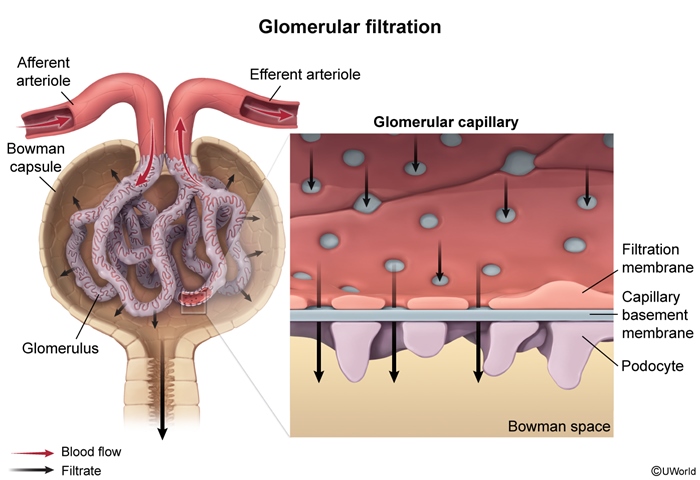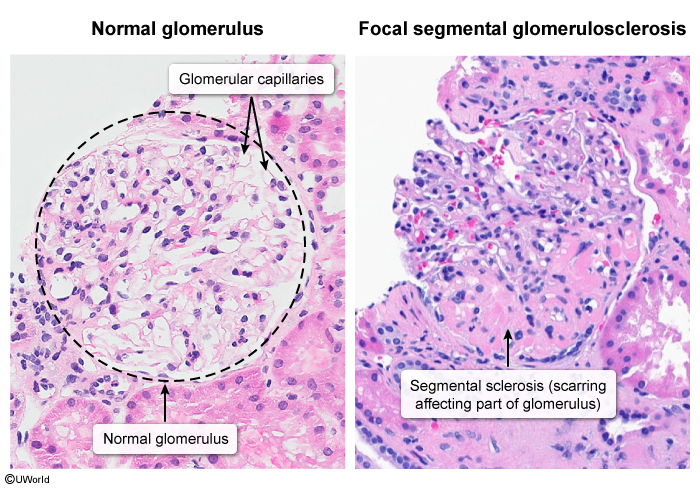Focal Segmental Glomerulosclerosis (FSGS), Including HIV-Associated Nephropathy (HIVAN)
Article Sections
Introduction
Focal segmental glomerulosclerosis (FSGS) is characterized by scarring (sclerosis) that affects some (focal) glomeruli and only parts (segmental) of the involved glomerular tuft. It can occur from multiple disease processes, each with a distinct underlying mechanism. FSGS is classified as primary, secondary, and genetic. Although FSGS represents a significant cause of nephrotic syndrome in adults, many patients exhibit subnephrotic proteinuria that does not meet criteria for nephrotic syndrome.
Epidemiology
FSGS accounts for approximately 35% of adult nephrotic syndrome cases and is the leading glomerular cause of end-stage renal disease (ESRD) unrelated to systemic diseases. It is 4 times more common in Black individuals compared to White or Asian patients and affects men 1.5 to 2 times more frequently than women. FSGS is uncommon in children, in whom minimal change disease (MCD) is the predominant cause of nephrotic syndrome; when present, FSGS is usually genetic.
Continue Learning with UWorld
Get the full Focal Segmental Glomerulosclerosis (FSGS), Including HIV-Associated Nephropathy (HIVAN) article plus rich visuals, real-world cases, and in-depth insights from medical experts, all available through the UWorld Medical Library.
Figures

Images
